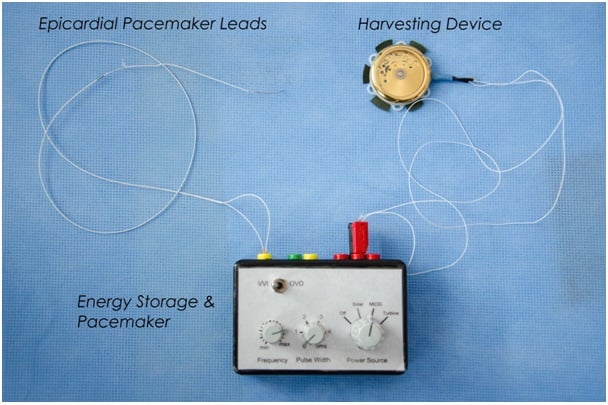World’s First Pacemaker Powered By A Mechanical Watch Movement

How cool! Something has come across my desk that does NOT involve modern technology bettering the wristwatch with the soon to be seen Smart Watch! Instead – someone has looked to the almost 240 year track record of the automatic watch movement to power a pacemaker. Yes you read it correct, we’re talking about the world’s first pacemaker powered by a mechanical watch movement!
There have already been so many comparisons between the human heart and the mechanical watch. Now Swiss (who else?) scientists have found a way to pair the two by modifying an automatic watch movement to power an implantable pacemaker. The thesis behind the advancement is to use the tried and true oscillating rotor movement to power a pacemaker long enough to reduce or eliminate the necessity for replacement surgeries down the line.
Keeps On Ticking (we hope)
Those of you old enough to remember advertisements for Timex will immediately place the line “Takes a licking and keeps on ticking.” It connotes the impressive durability and reliability of the Timex watch’s movement, while being run through a dishwasher or dragged behind a powerboat! Realistically, it was a marketing ploy; the mechanical watch movement was already a well-engineered and robust device long before anyone ever heard of John Cameron Swayze (no relation to Patrick – RIP).

Think about it this way: a watch that is 30 years old and in continuous use (like the Rolex I’ve been wearing this year) ticks 7,573,824,000 times. The average human heart beats an average of 2,500,000,000 times in a 70-year lifetime. Clearly the mechanical watch is the superior creation. Though, if your watch runs fast or slow or stops, you can take it to a trained technician to repair or replace the malfunctioning components. If your heart runs fast or slow or stops that means you are about to die. Enter the pacemaker. A device designed to keep your body’s balance wheel running correctly.
In 1950 the first pacemaker was created and implanted. Sadly, that first pacemaker was something like ENIAC the first computer, by that I mean it was by today’s standards impossibly large, something of a pain to use and required access to AC power (as in, it was plugged into the wall!) In 1958 doctors and scientists developed a pacemaker small and light enough to be implanted under the user’s skin, thus freeing the wearer up from the power outlet.

Pacemakers rely on electrical power to stimulate the rhythm of the heart’s valves. That electrical power comes from batteries. We know all too well batteries need to be replaced. (‘I wonder if you could SHAKE a pacemaker like the television remote control?’) Hmm, what about a pacemaker that drew its power from motion… like an automatic watch movement?
Enter the scientists at ARTORG, University of Bern. While spit-balling ideas to improve the longevity and overall risk profile of the pacemaker, Professor Rolf Vogel took note of the automatic watch movement to capitalize on the heart’s motion as a source of power.

The doctors and engineers at ARTORG took an automatic movement, stripped it of superfluous complications like date and moon phase and capitalized on the human body’s natural motion to generate power to run an implantable pacemaker. With tweaks and modifications the initial prototype has been bumped-up to run at 130 beats per minute with a new and enhanced capacitor. (In effect they have created a Seiko Kinetic movement!)
The Monochrome Seal of Approval:
Because current pacemakers are battery powered we will consider them ‘quartz’ and immediately say that we don’t like them. Therefore we completely endorse and support the work of the scientists and doctors at the University of Bern! Well-done guys!
Source: AlphaGalileo.org




2 responses
I’ve got to get one of these. Any idea on whose movement is being used?
novody cardes